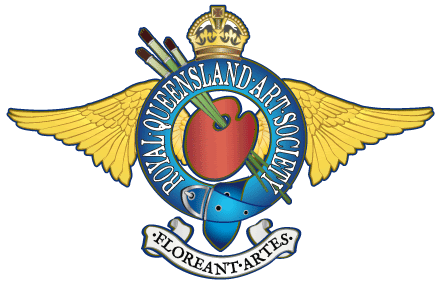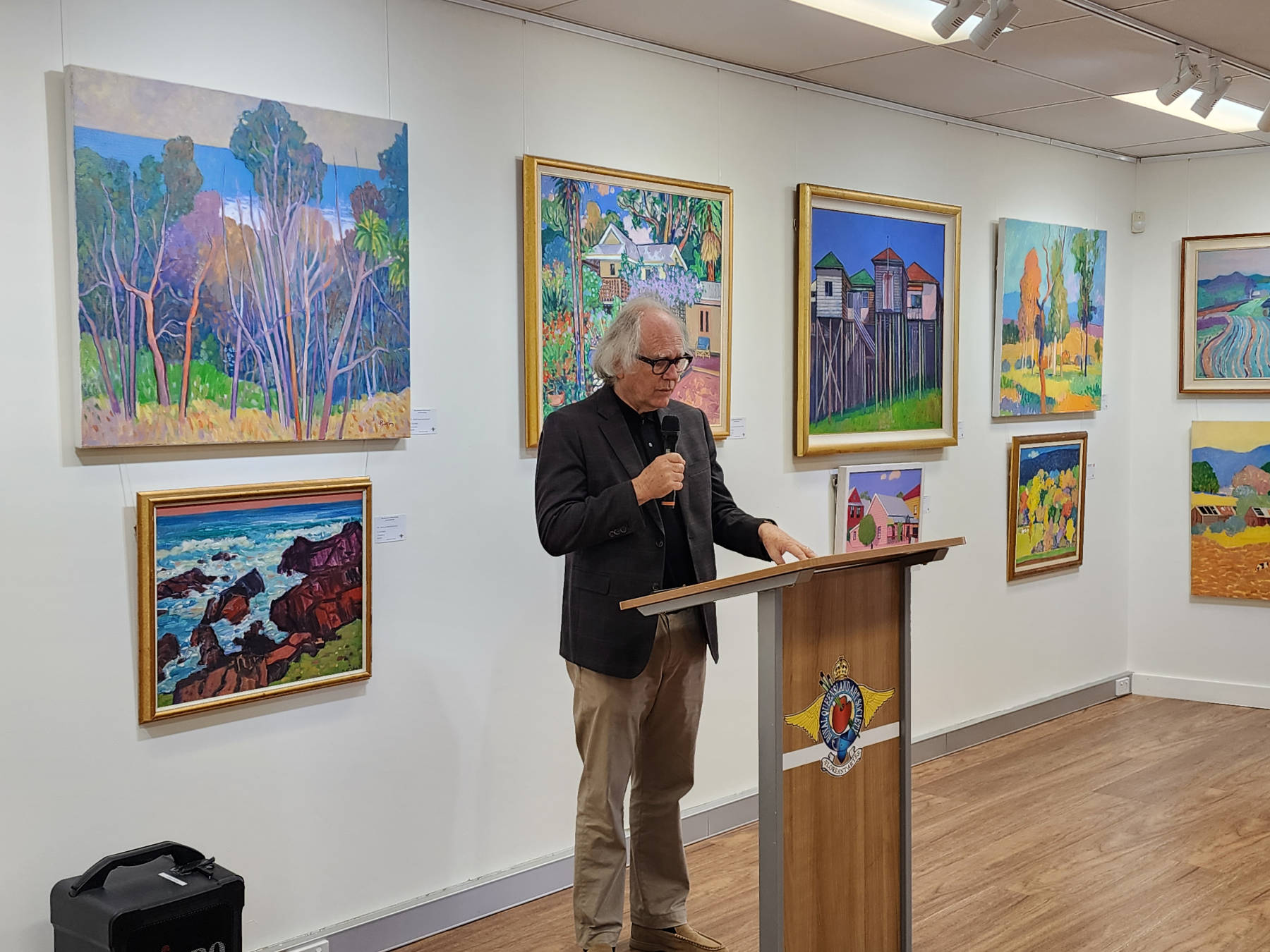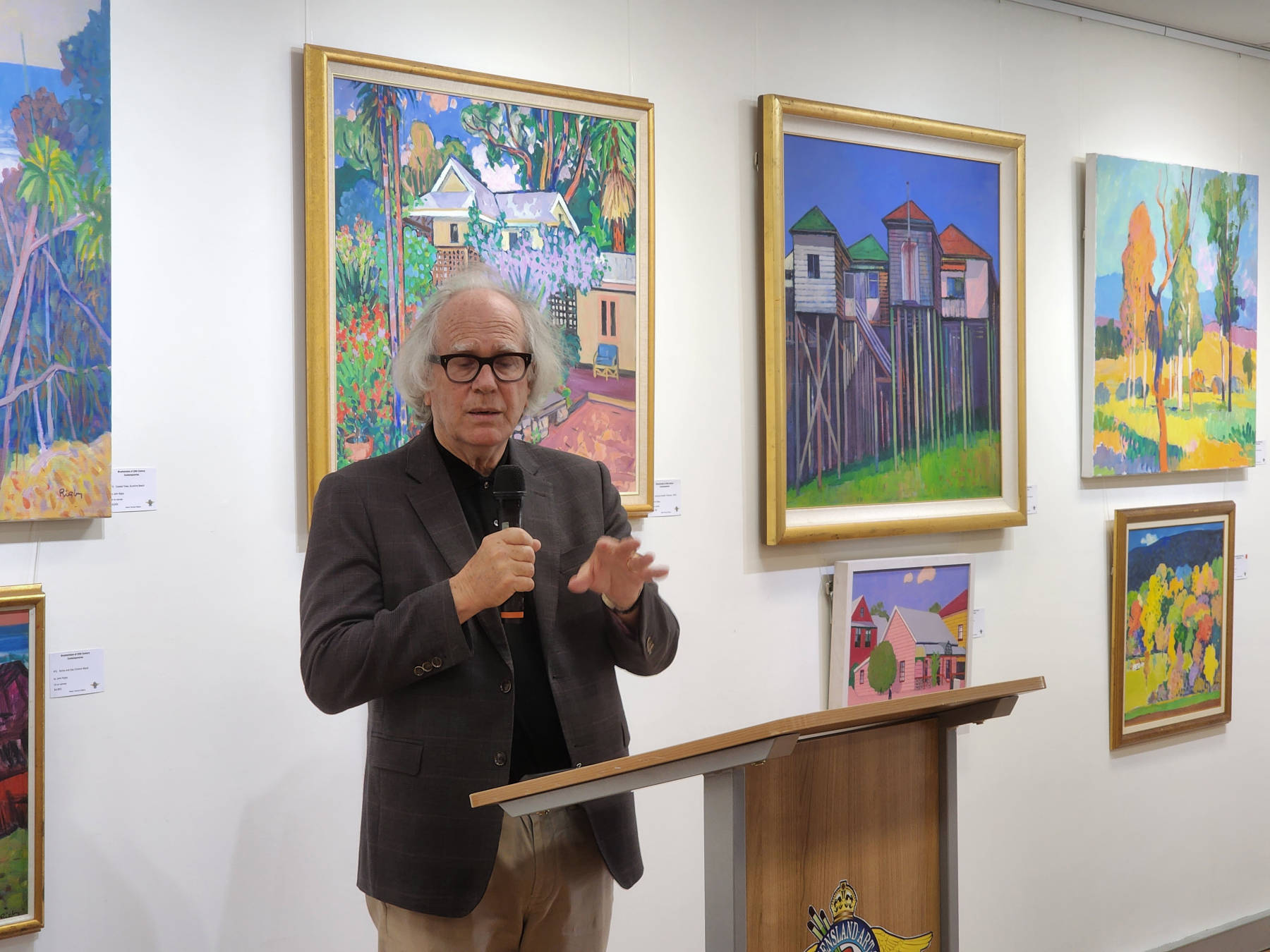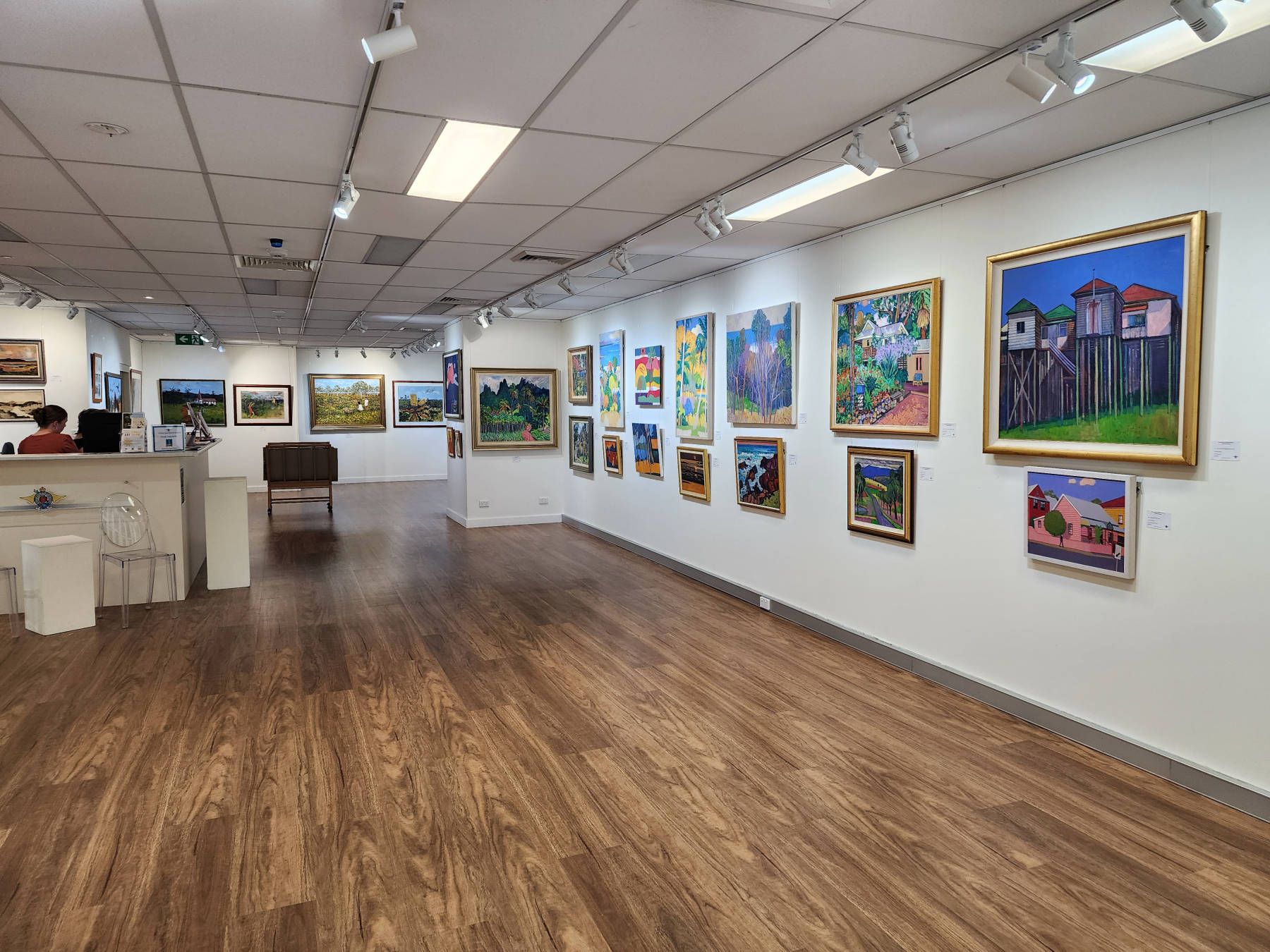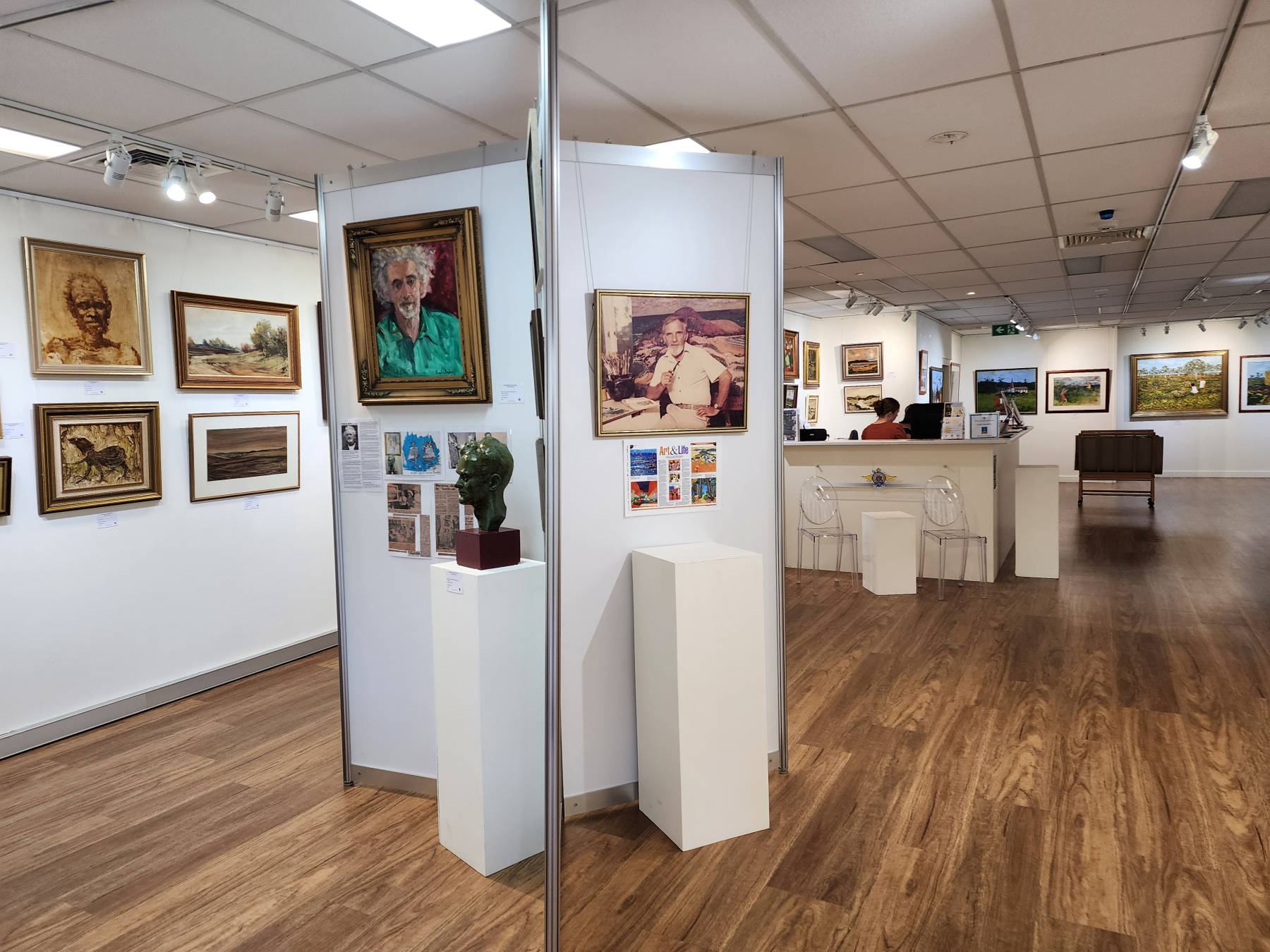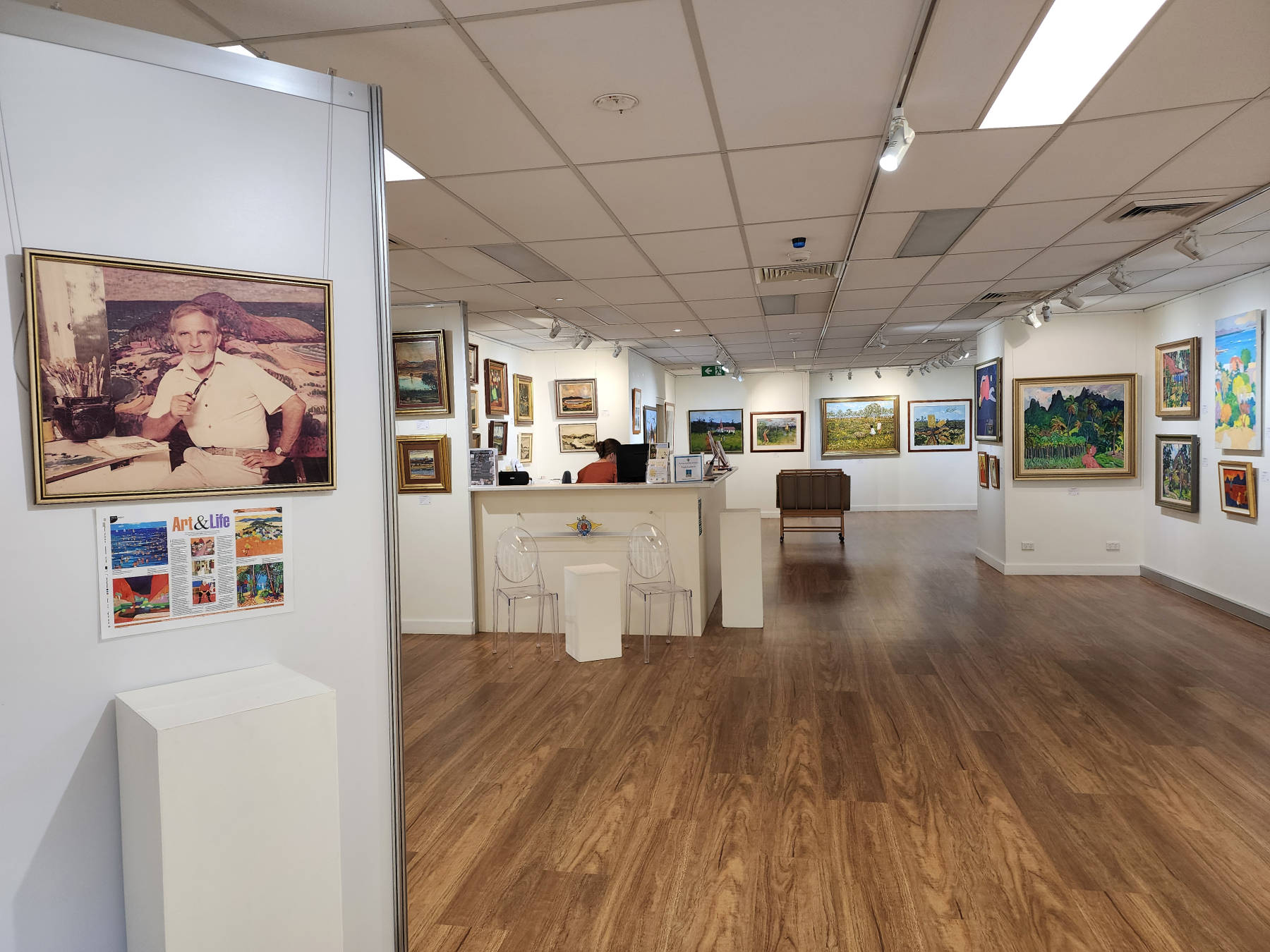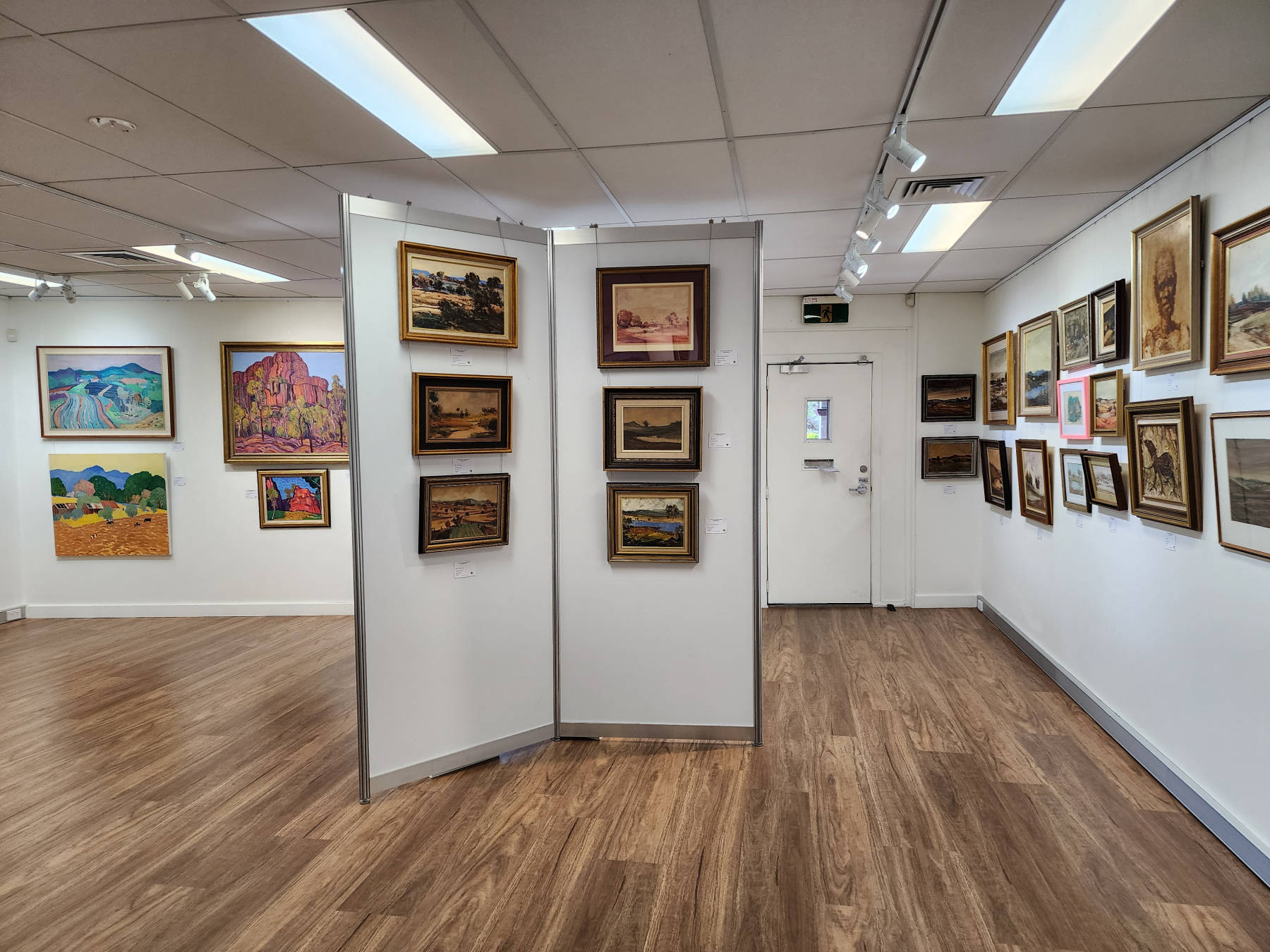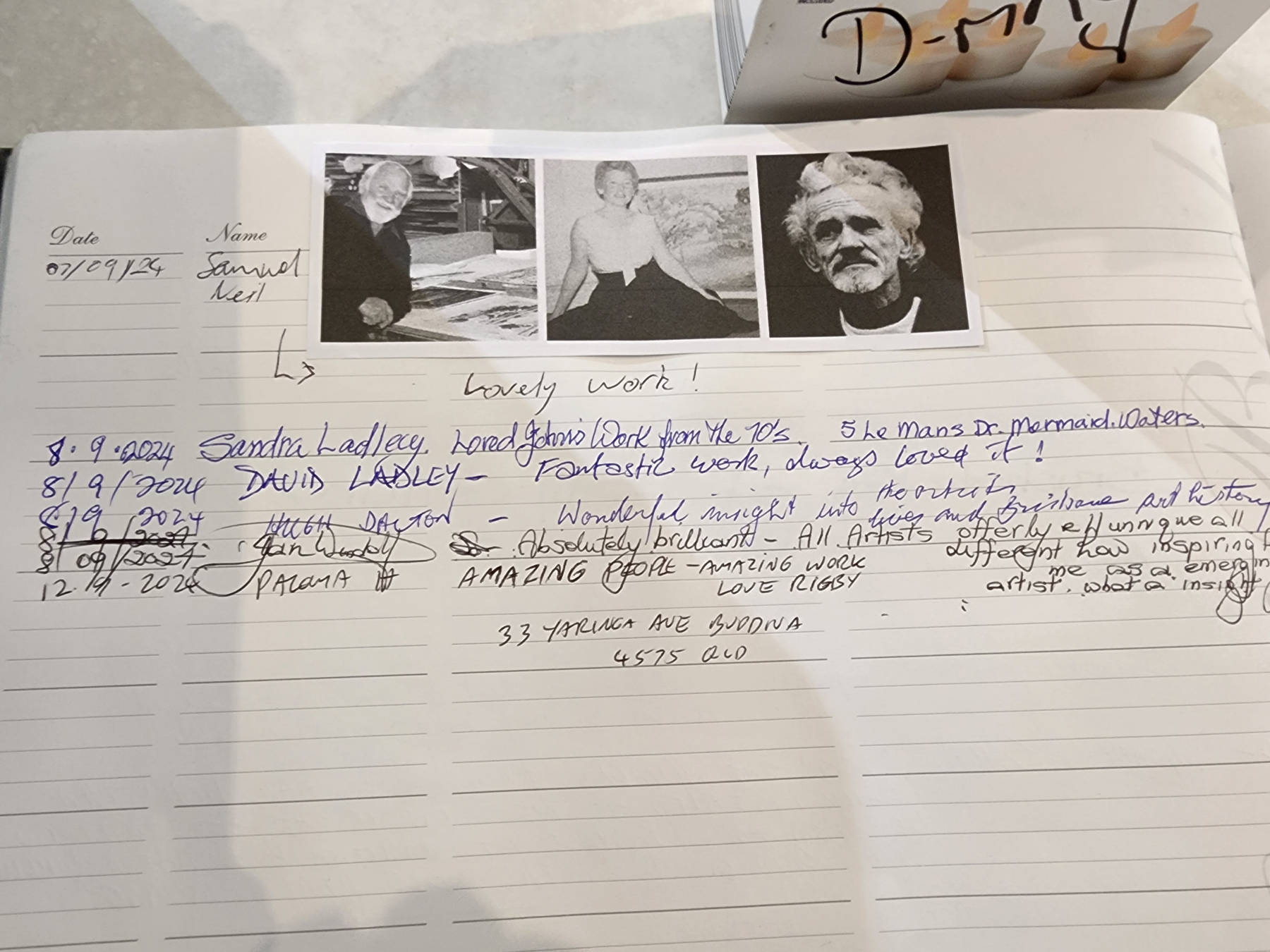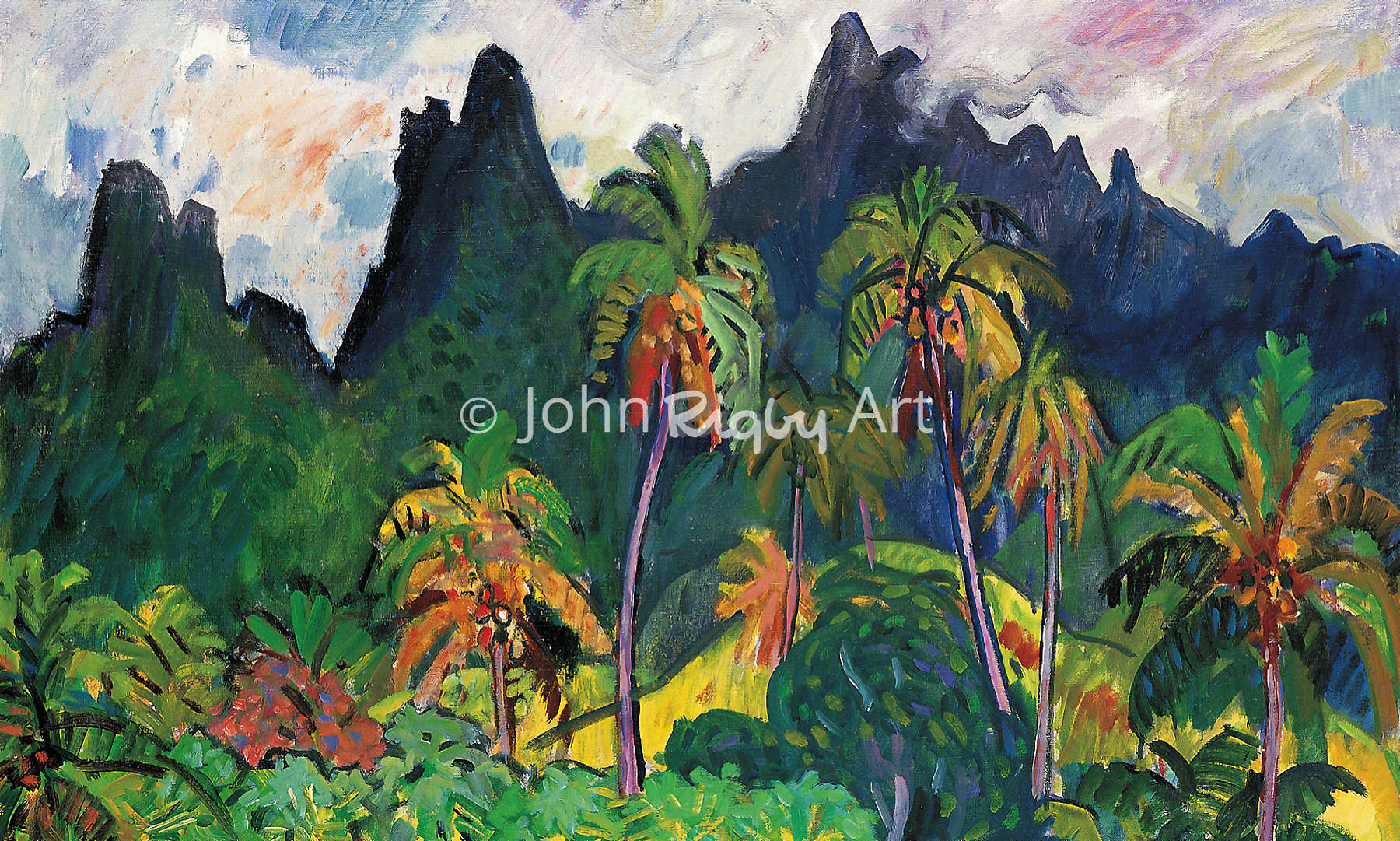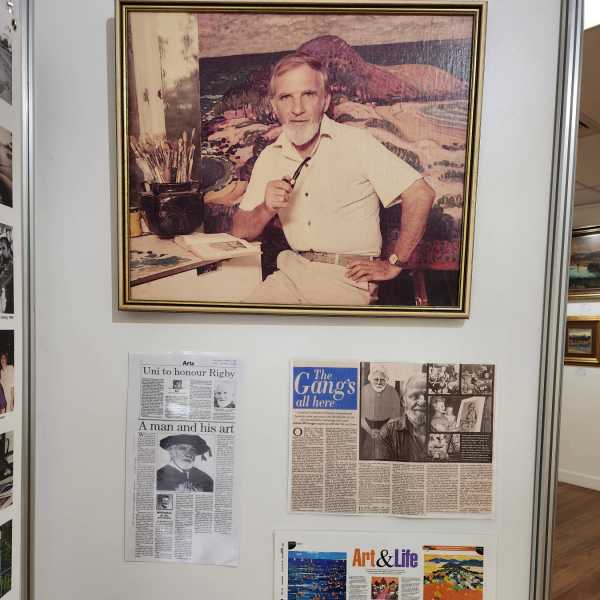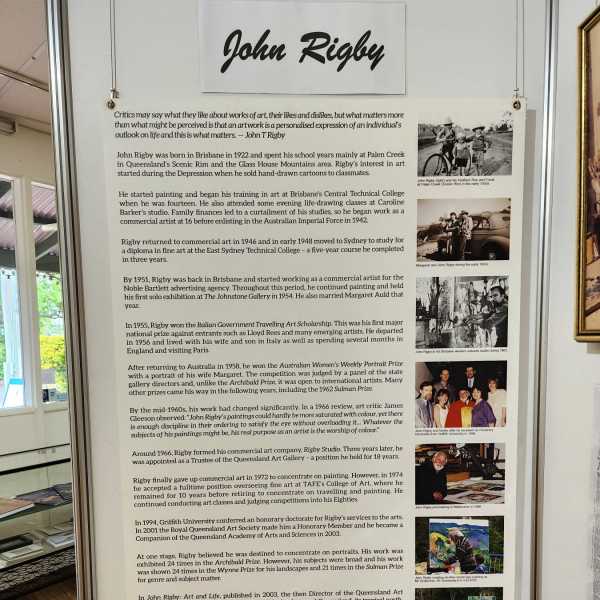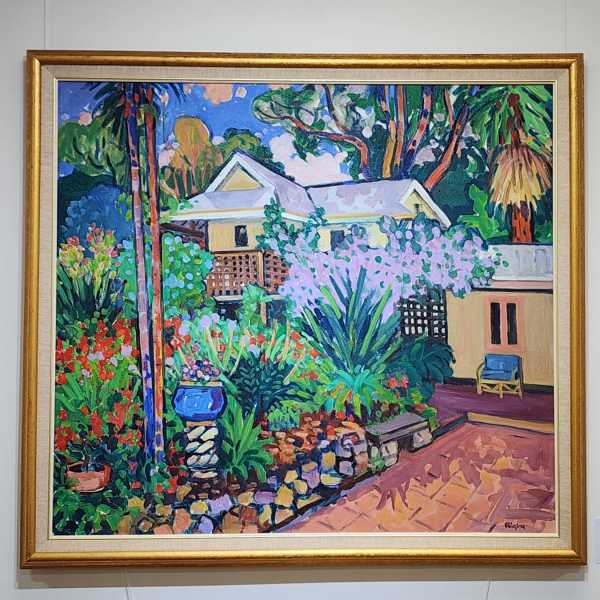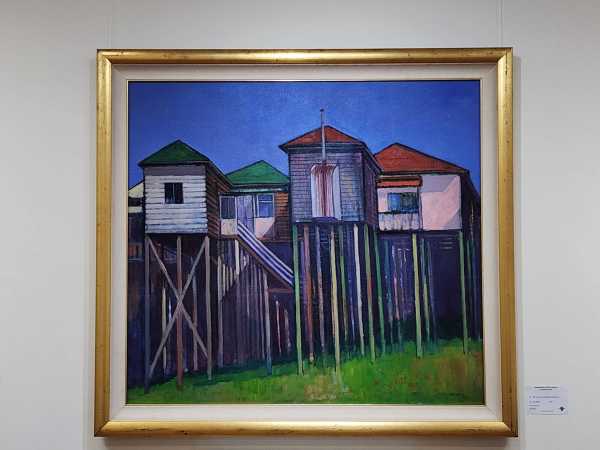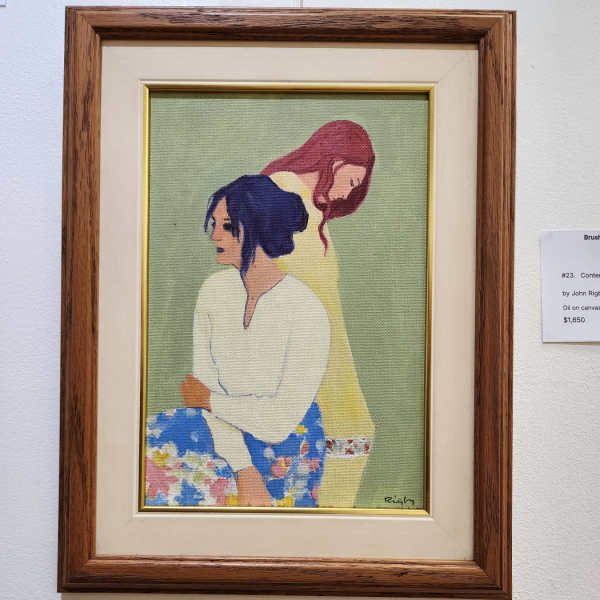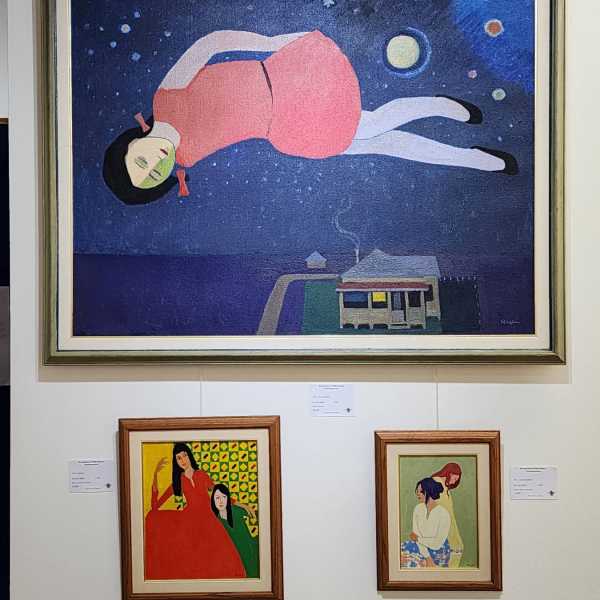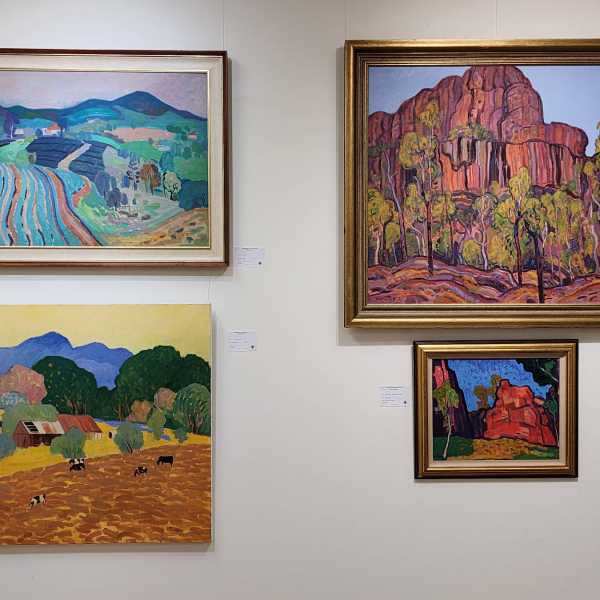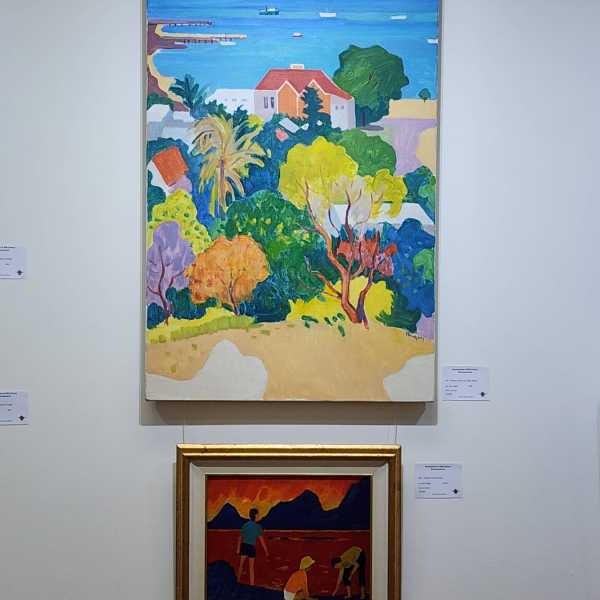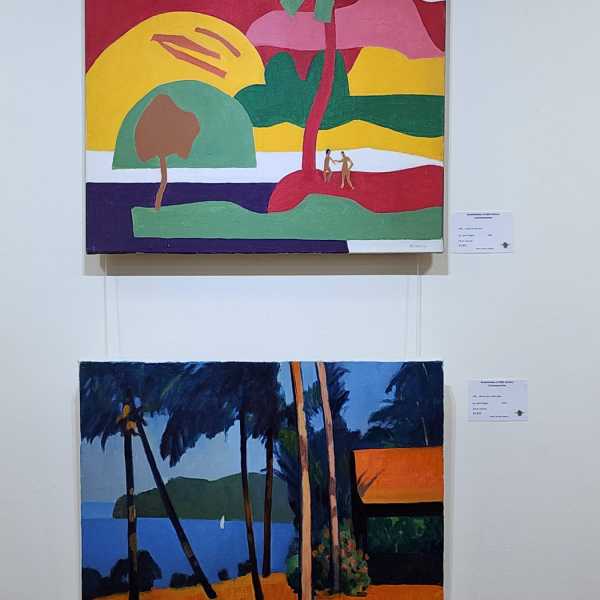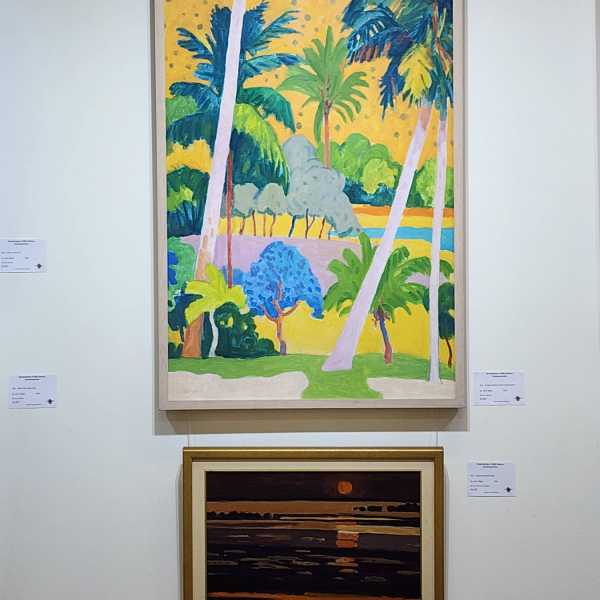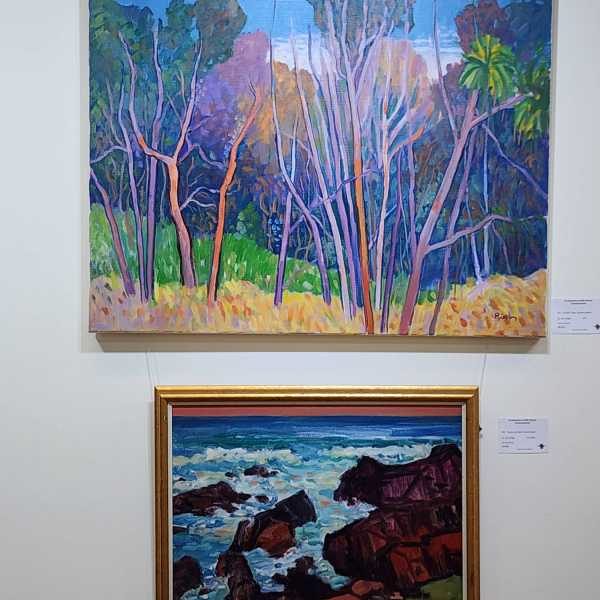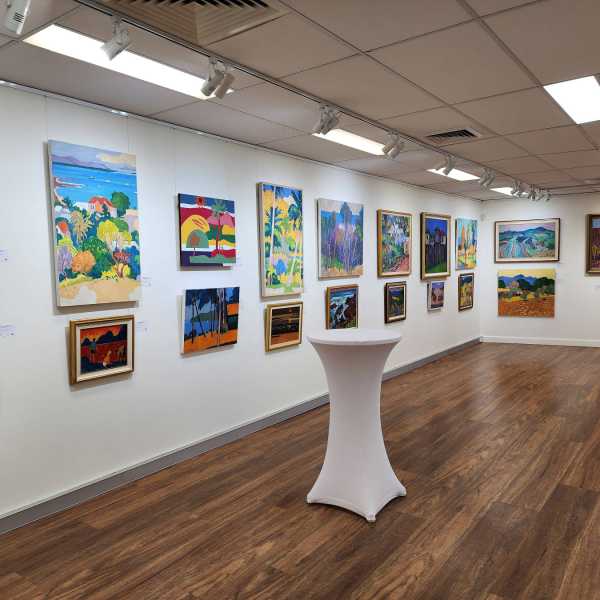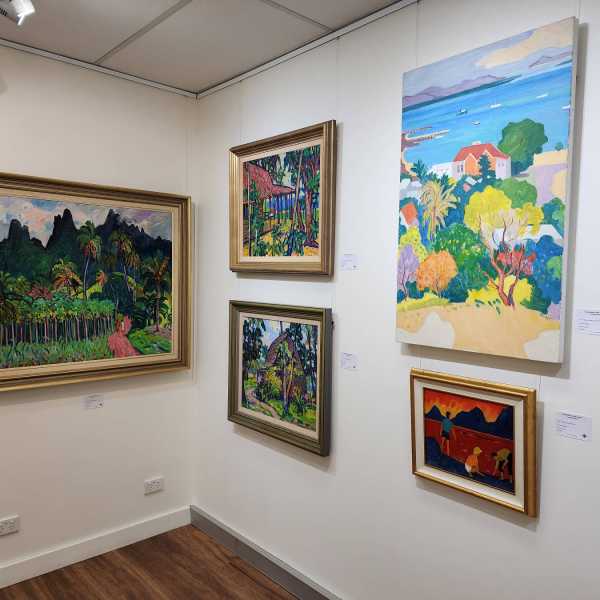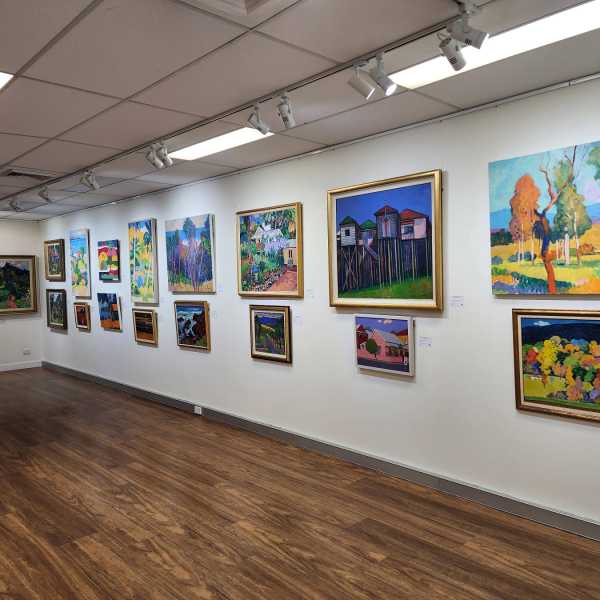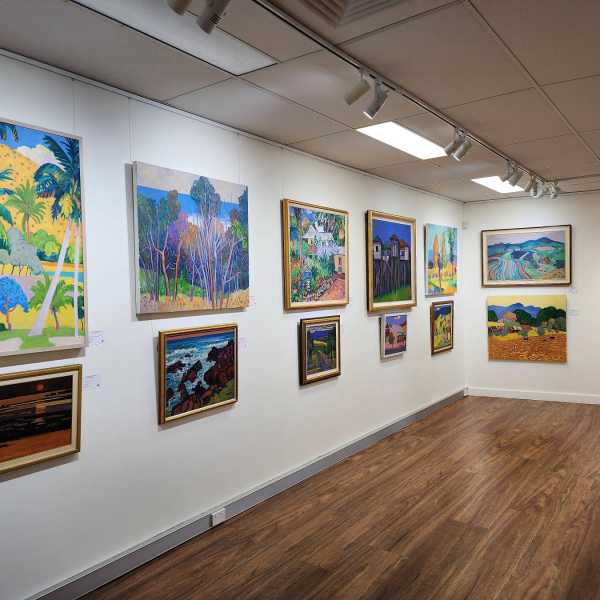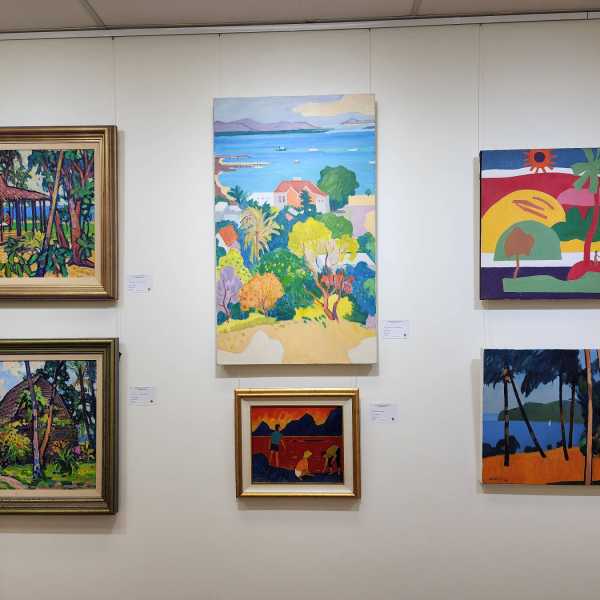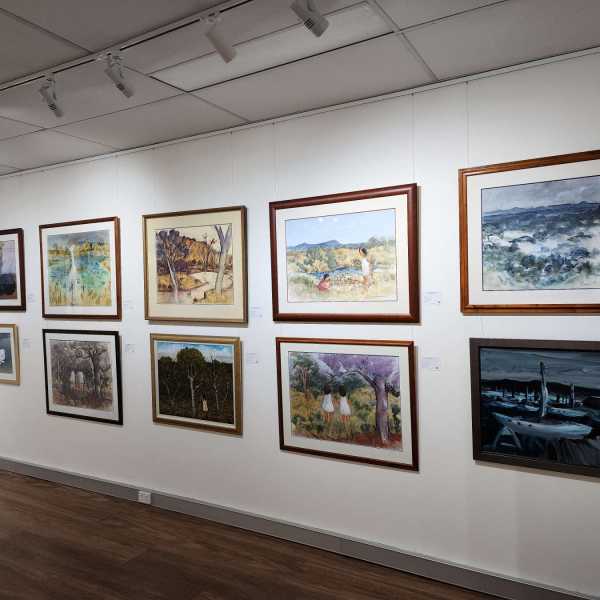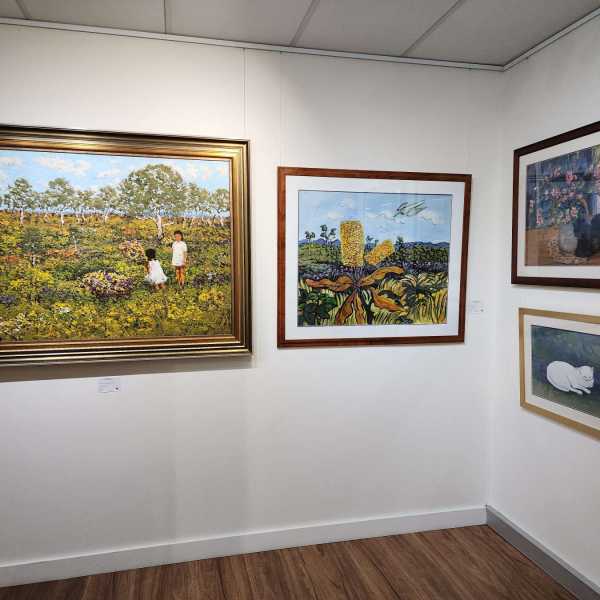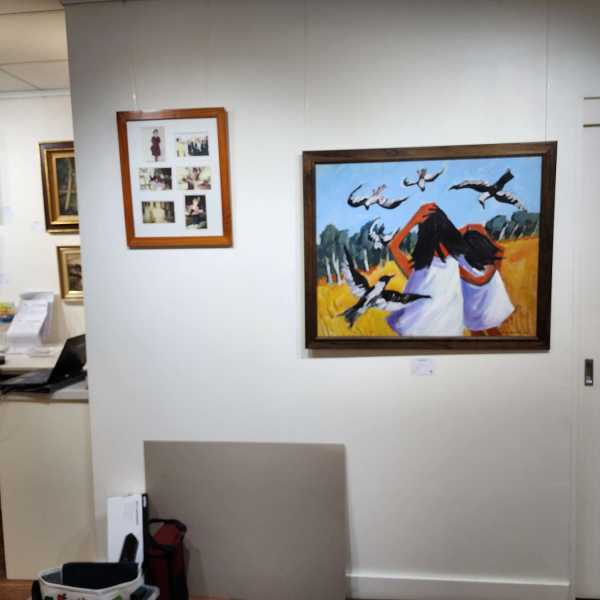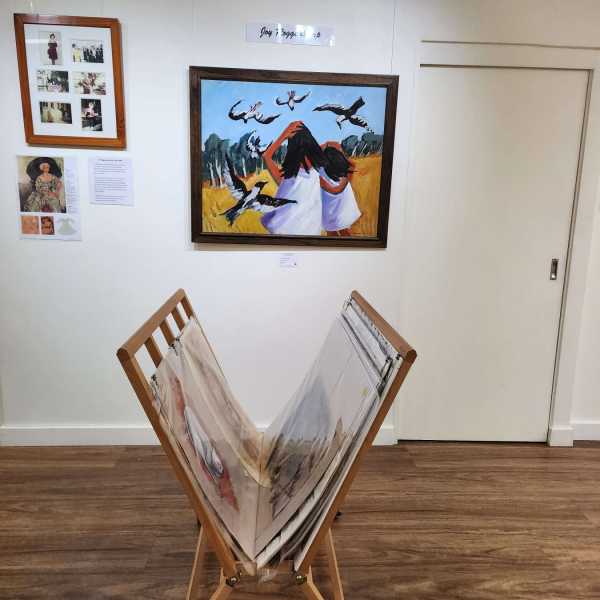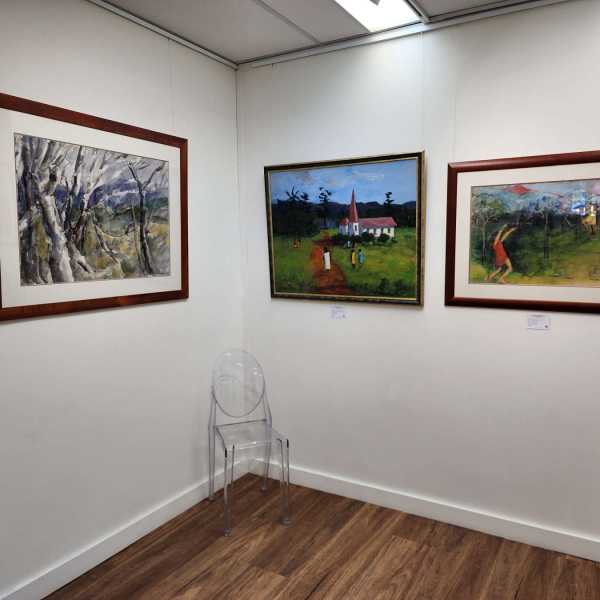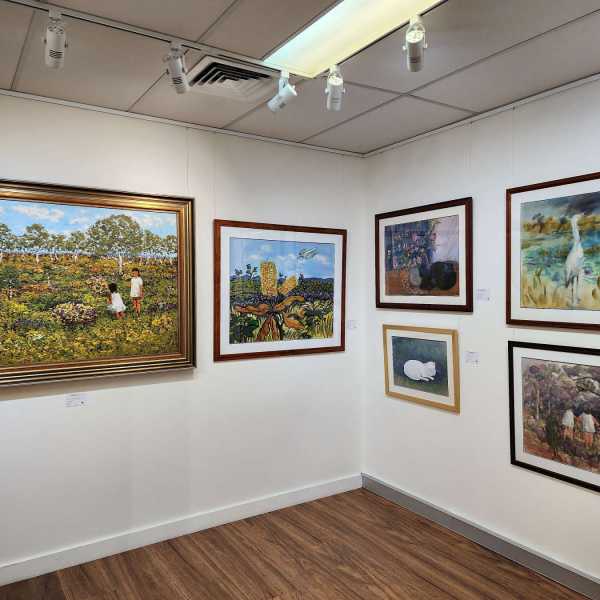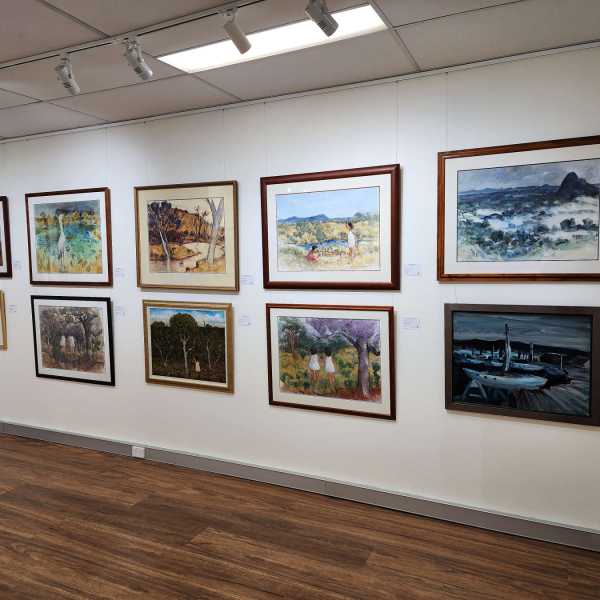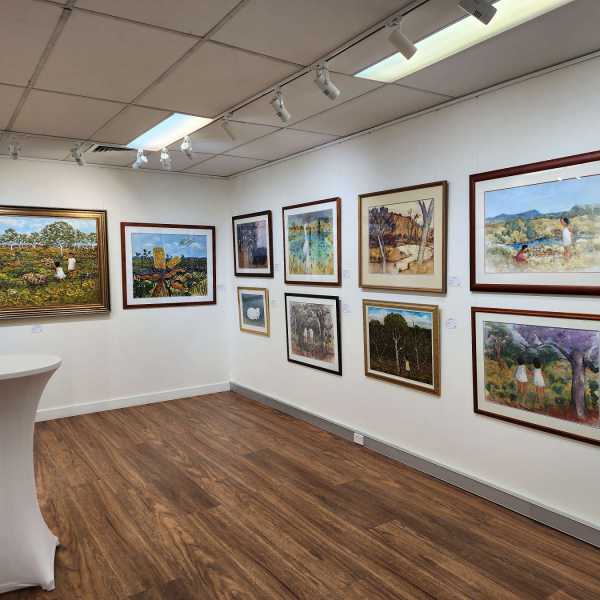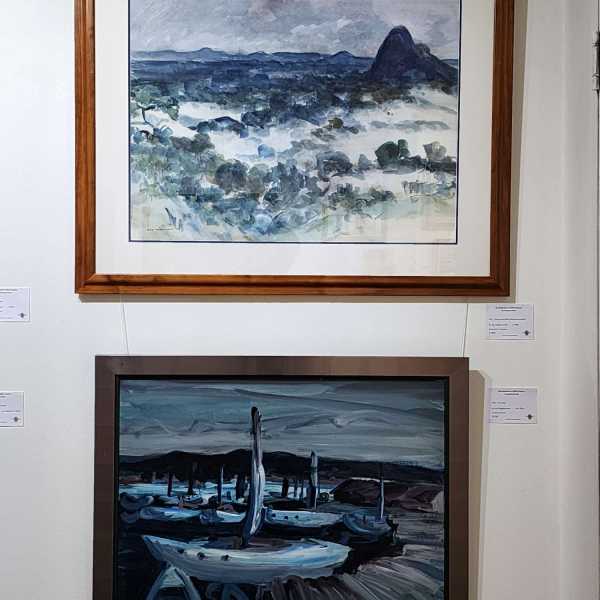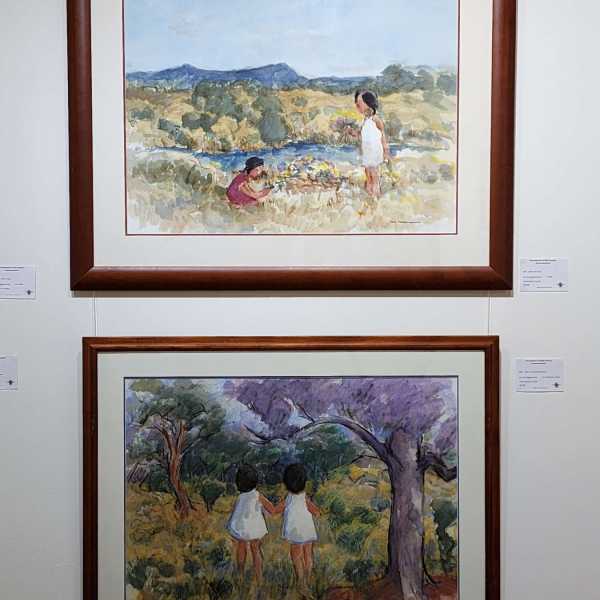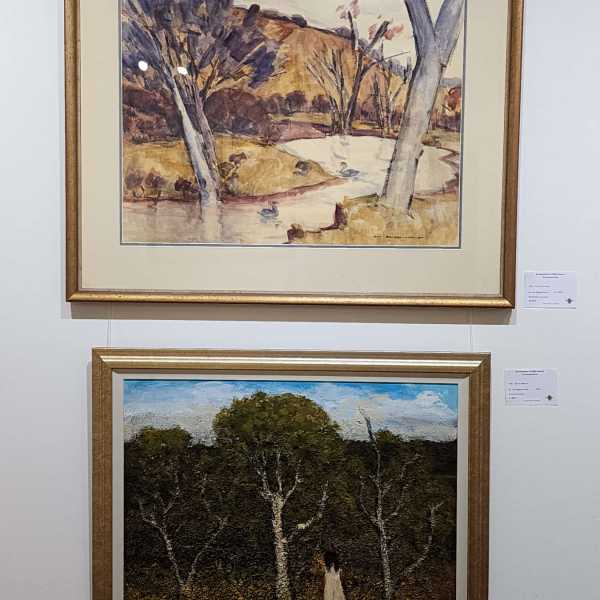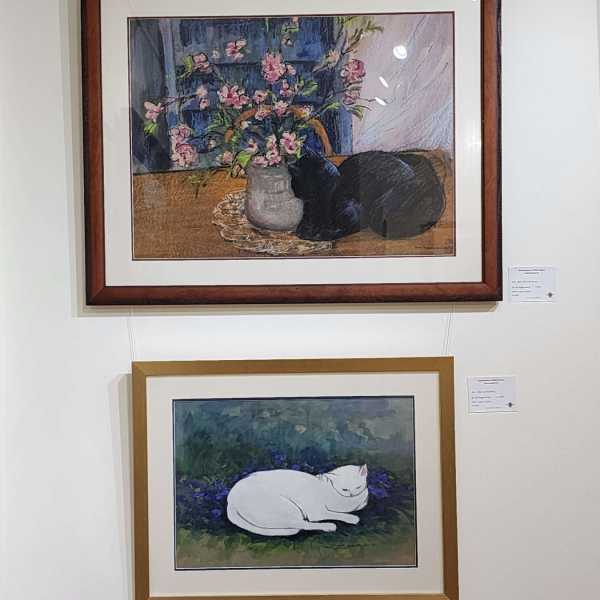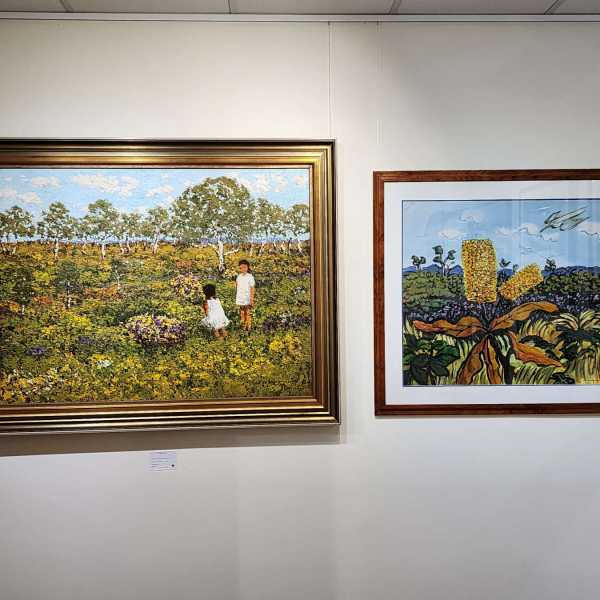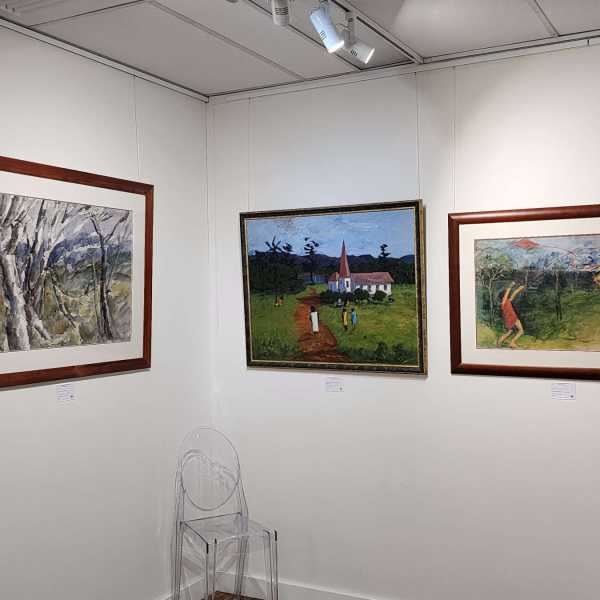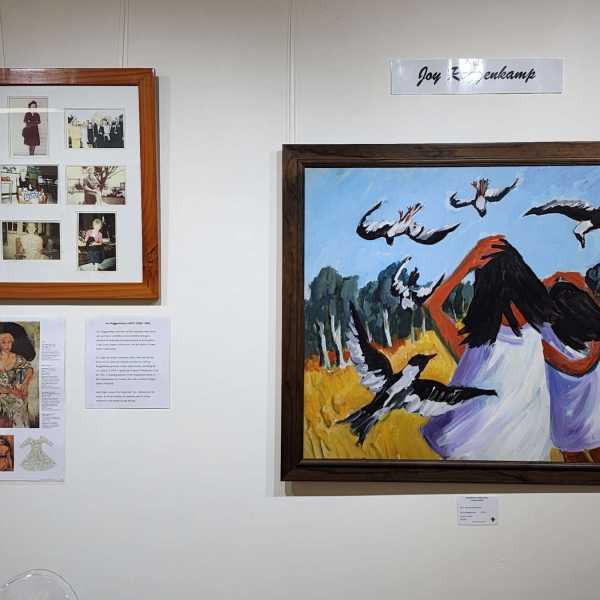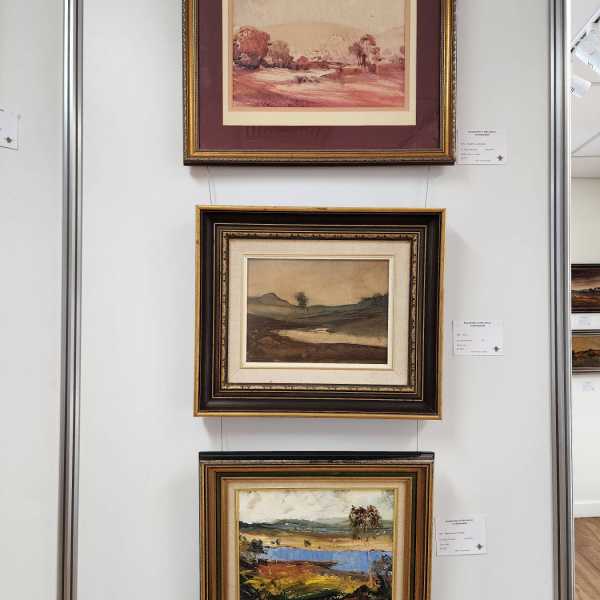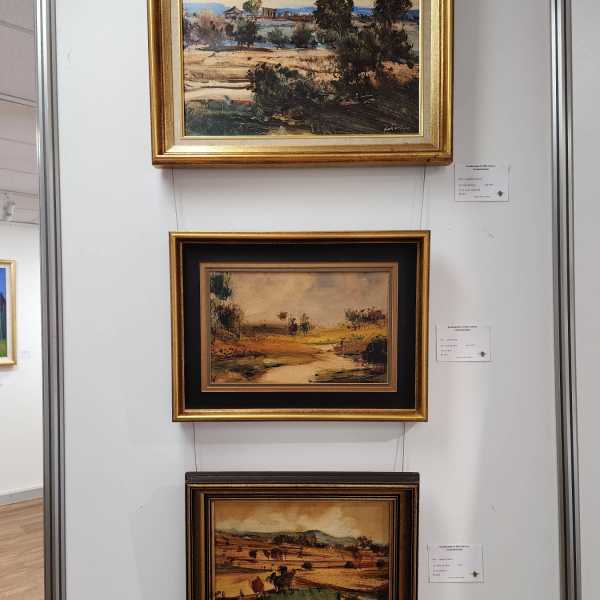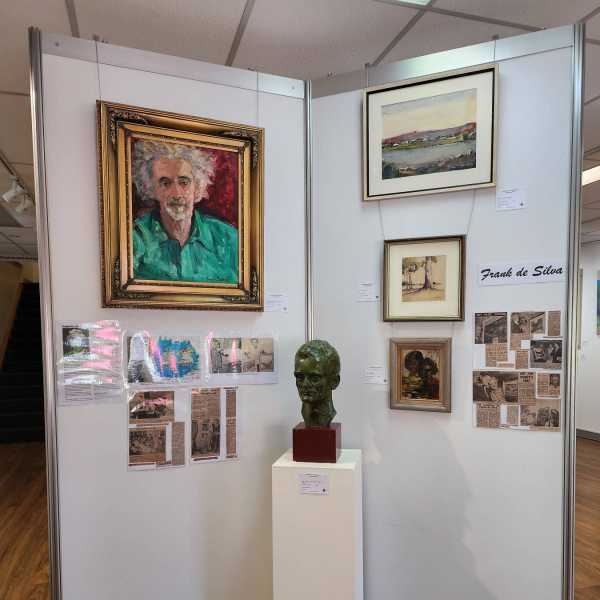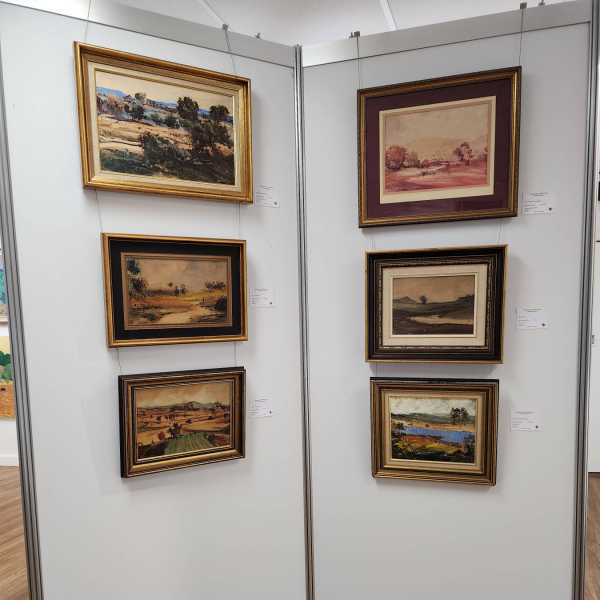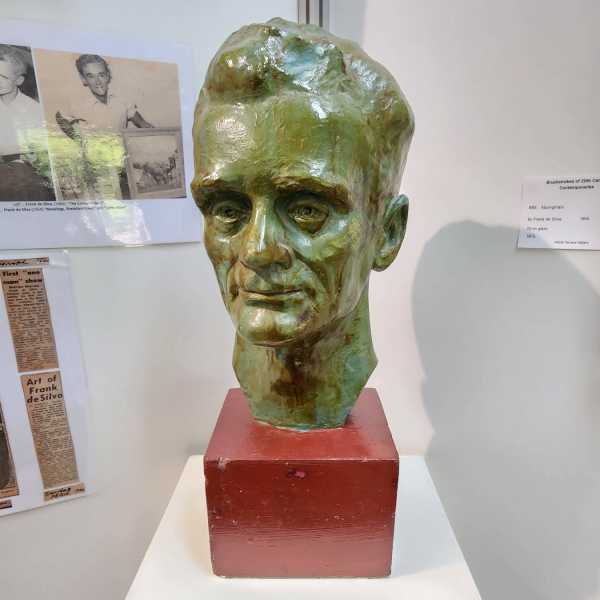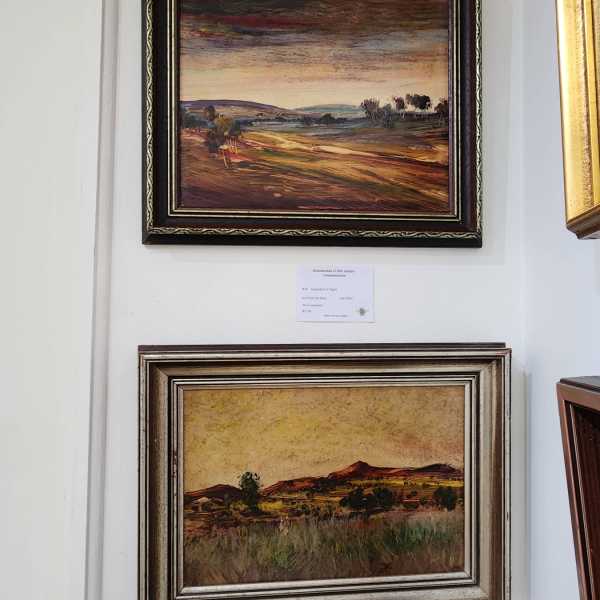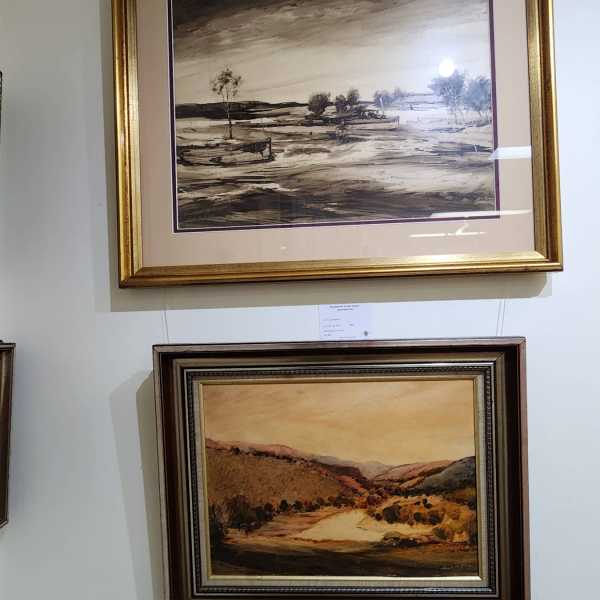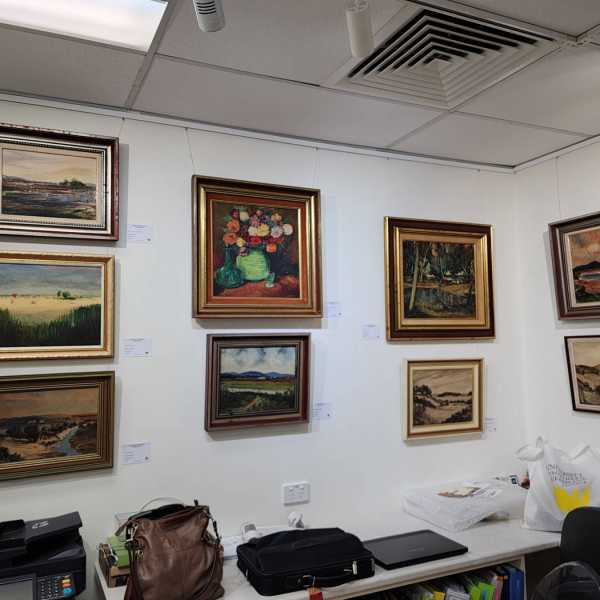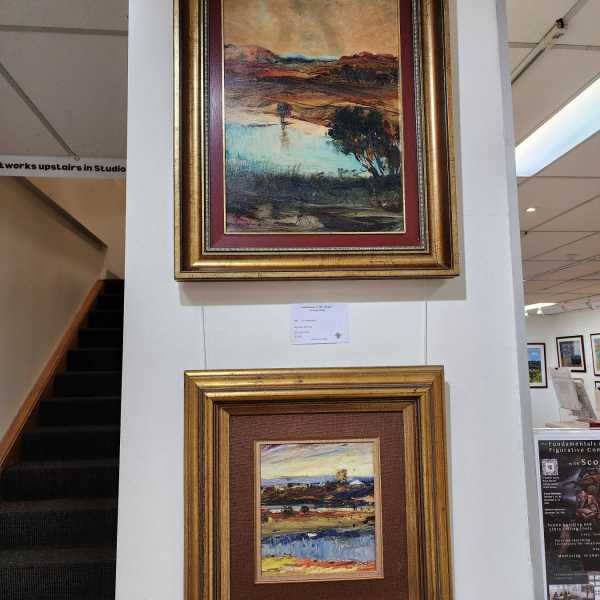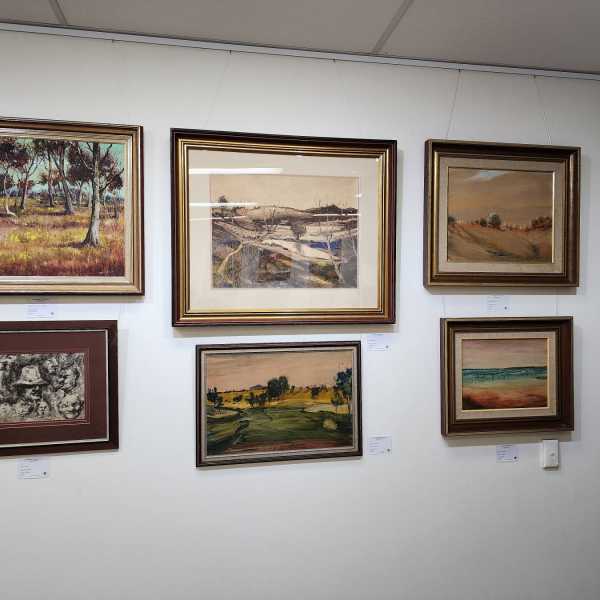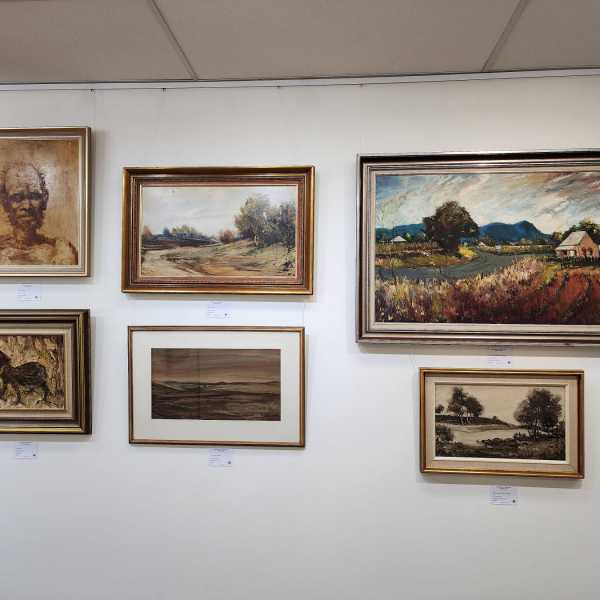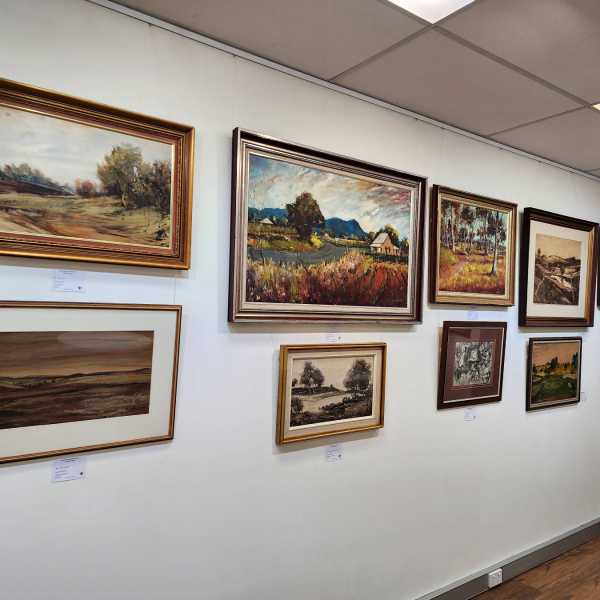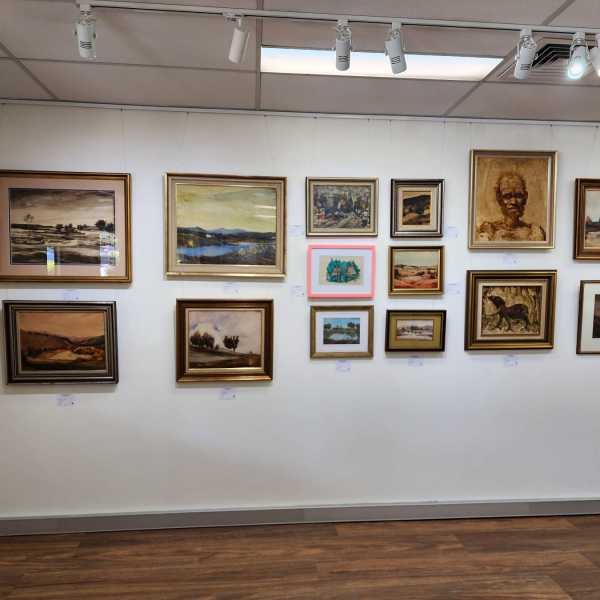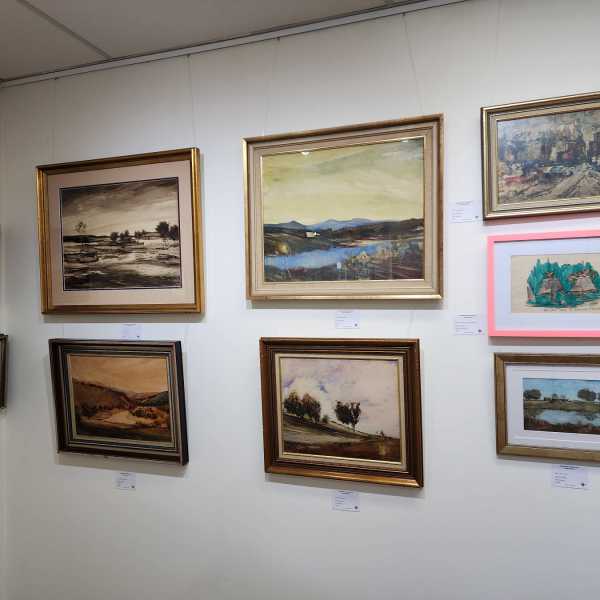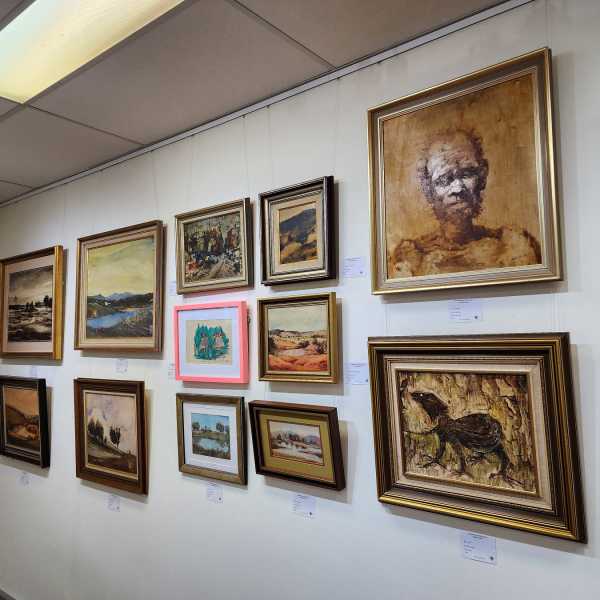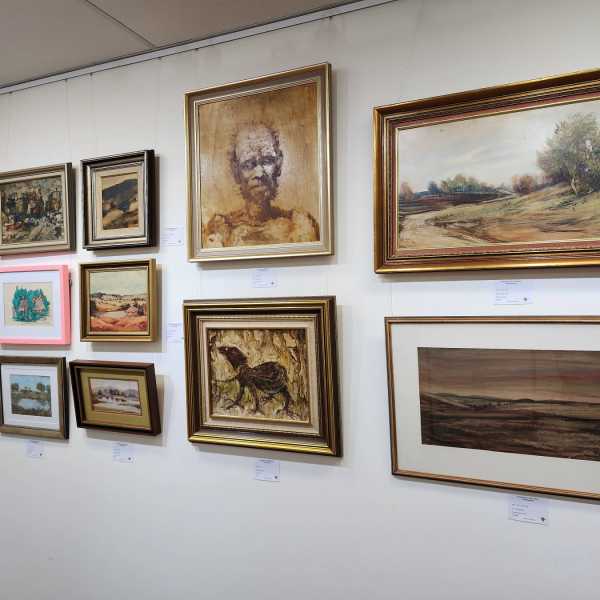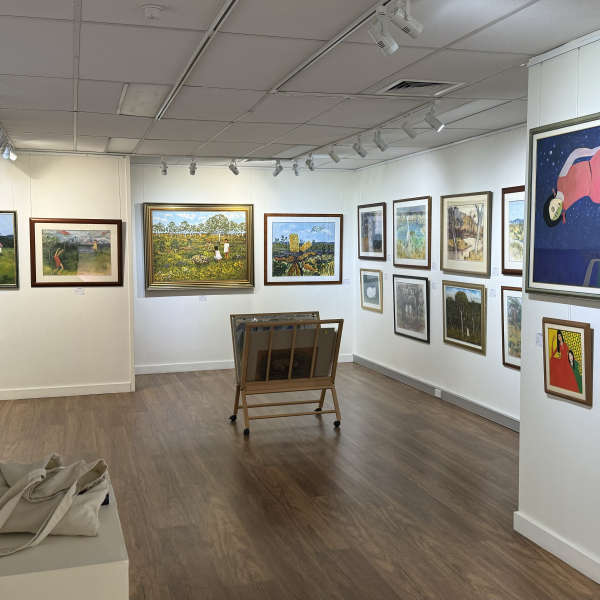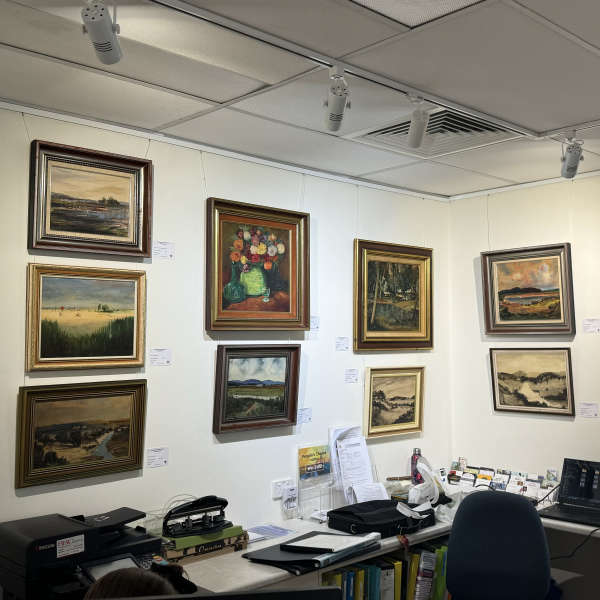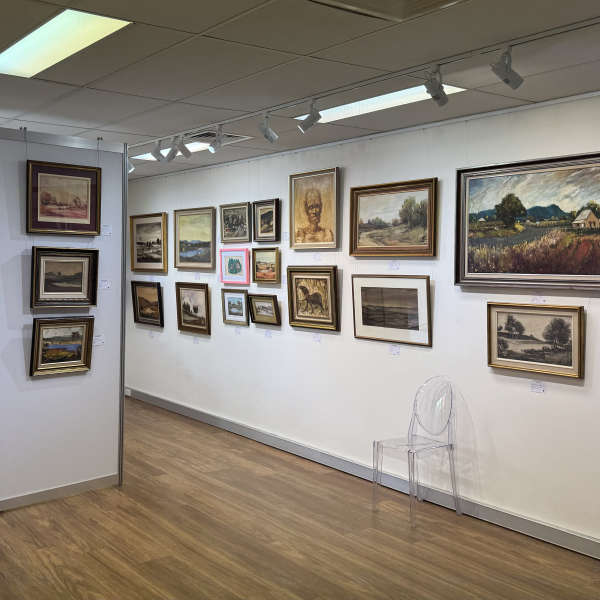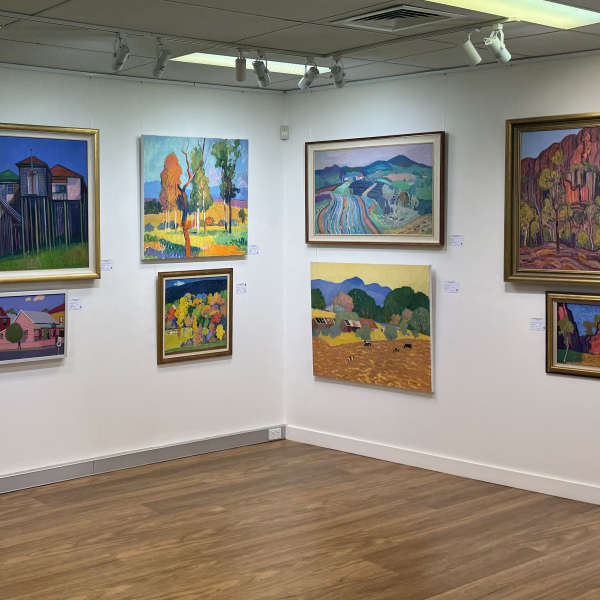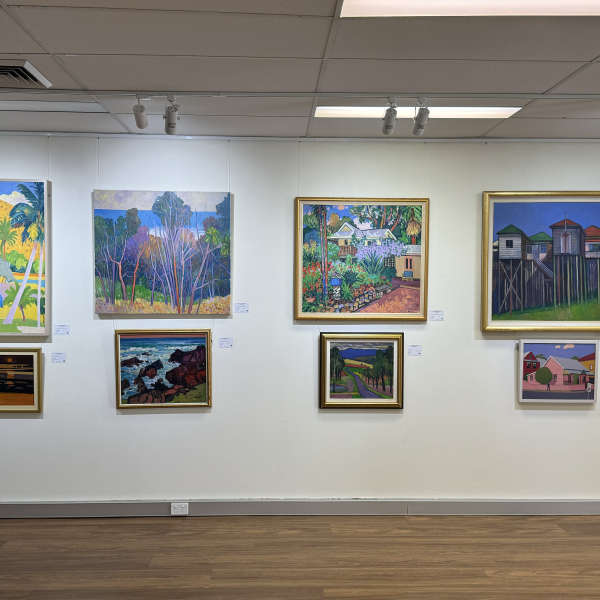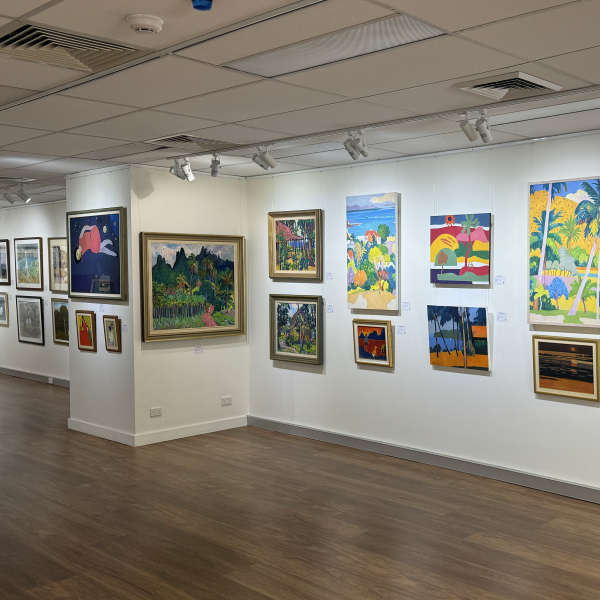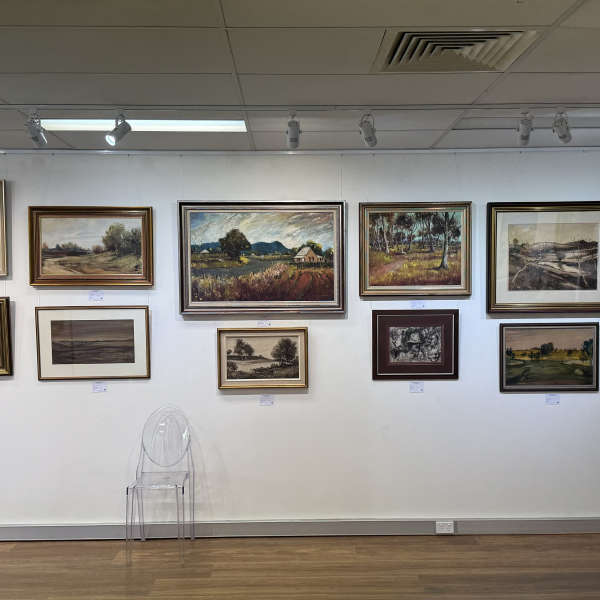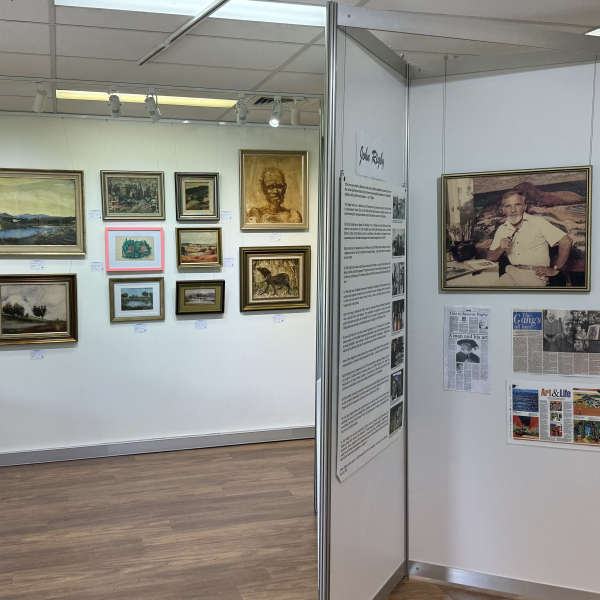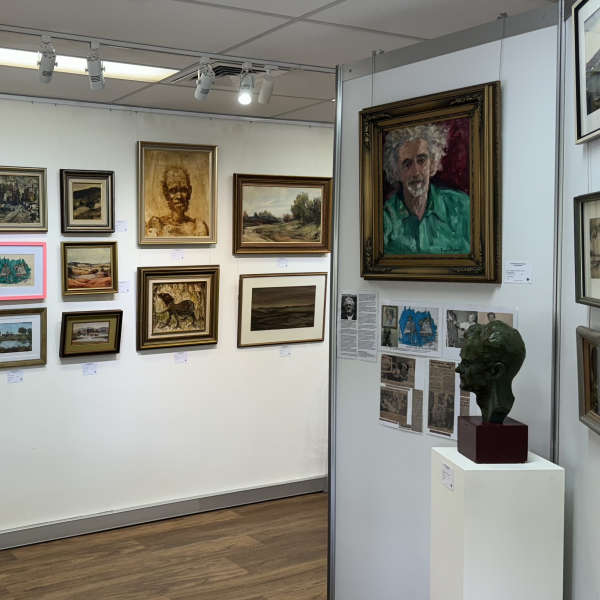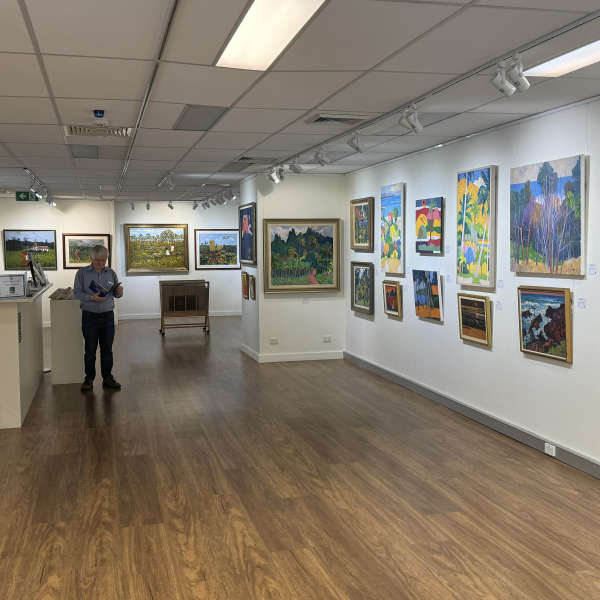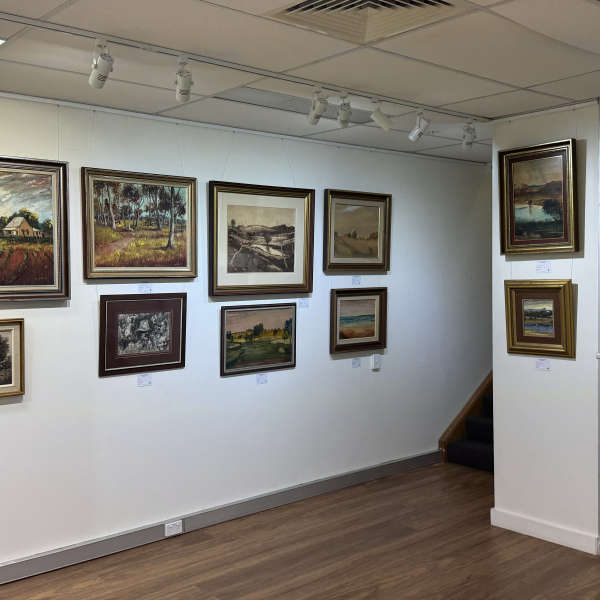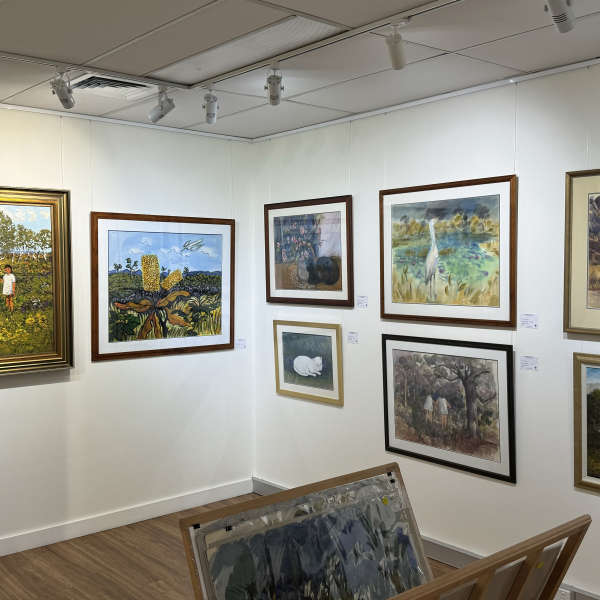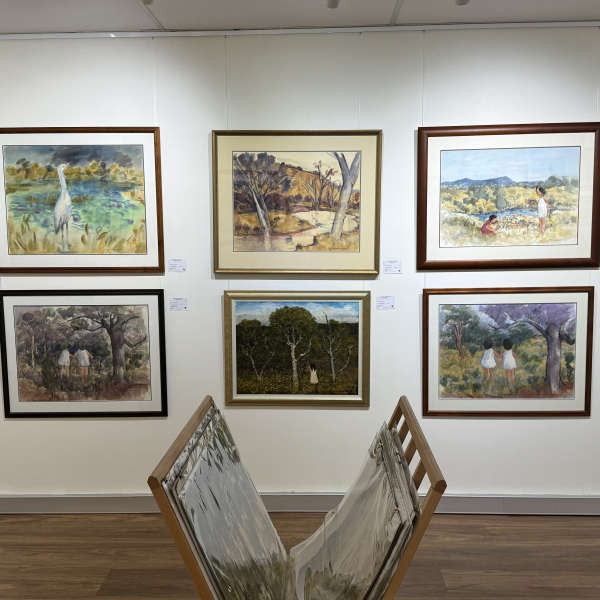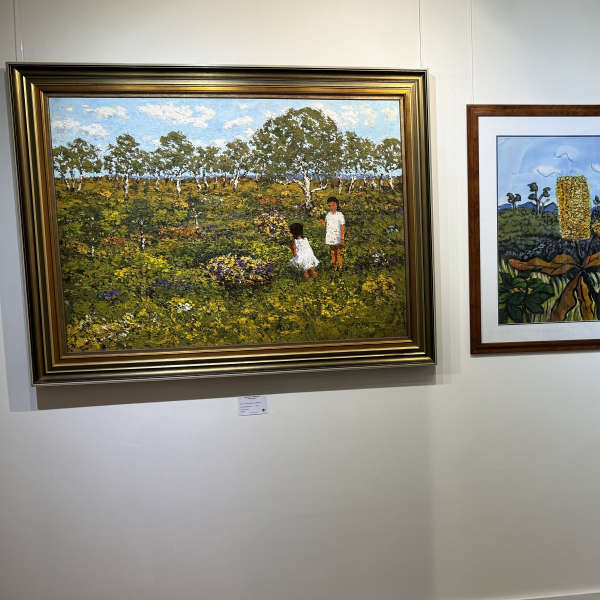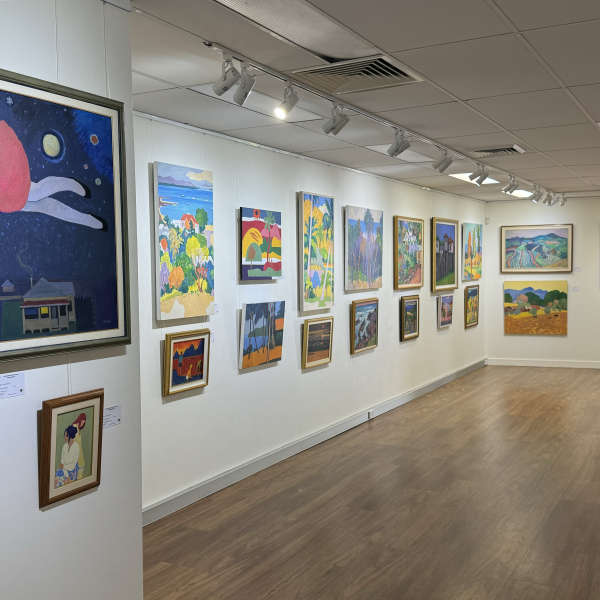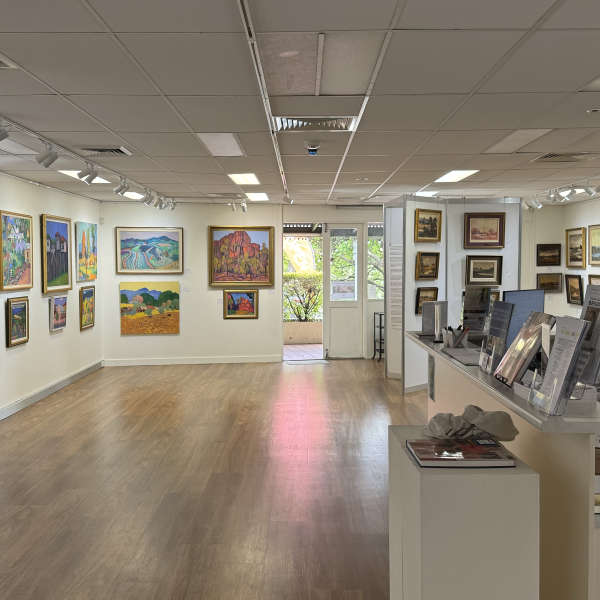Brushstrokes of 20th Century Contemporaries: Rigby, Roggenkamp, and de Silva
September 2024, the Royal Queensland Art Society (RQAS) has presented a unique exhibition featuring artworks by John Rigby (1922-2012), Joy Roggenkamp (1928-1999), and Frank de Silva (1913-1981).
All three artists enriched the local art scene with their perspectives and talents. Some works, sourced from personal collections of the artists’ families, have not been exhibited for many years.
Exhibition Gallery – Opening

Phil Brown Article
Brilliant brushstrokes – legacy from a lost world
It’s tempting to compare the late great Queensland artist John Rigby with Paul Gauguin, except for one thing. Rigby is more colourful.
It’s one of the signatures of the work of this diminutive man who was a Titan of art in Queensland for the latter half of the 20th century.
Rigby’s works are in most of the major collections but if you want to see an array of them on display right now you can – and what a riot of colour it is on the walls of the Royal Queensland Art Society: Petrie Terrace Gallery.
The exhibition Brushstrokes of 20th Century Contemporaries – Rigby, Roggenkamp and de Silva is on there until September 22. It’s an extraordinary museum-quality show featuring three important Queensland artists. They may not be fashionable now but anyone interested in our art history will know their names – John Rigby, Joy Roggenkamp and Frank de Silva.
All had ties to the Royal Queensland Art Society – Rigby started exhibiting with the society in 1941. John’s son Mark Rigby, who is well known as the former curator of the Sir Thomas Brisbane Planetarium at Mount Coot-tha, his sister Renee Aland and brother Tony Rigby, reached out to Joy Roggenkamp’s daughter Bronwyn and Frank de Silva’s son Greg and all three families mined their collections to bring the exhibition to fruition.
There have been a couple of Rigby retrospectives organised by the family including one at RQAS in 2022 and one showing work by Rigby and Roggenkamp on the Sunshine Coast in 2023.
Mark Rigby says the opportunity to hold an exhibition highlighting these three contemporaries was too good to pass up. It’s well worth a look if you like your art history and make sure you read all the didactic panels because each has a fascinating, if at times poignant story.
Joy Roggenkamp and Frank de Silva left us too soon – Roggenkamp’s life was cut short by illness, de Silva died in a car crash – but John Rigby soldiered on until he was 89 and was productive in his later years.
These artists lives spanned a century of Depression and war (Rigby and de Silva both served) and they were part of the burgeoning art scene in Queensland after World War II.
Now back to those colours. Rigby is an absolute master as a colourist and his works look so fresh and vibrant they could have been painted last week.
His Australian subject matter is a delight. He painted the suburbs – artwork Stilt Houses, Paddington, Brisbane (1993) is a classic – and he ranged further afield including into Central Australia. And like Gauguin he turned his eye to the Pacific islands and those paintings are some of my favourites in this exhibition. Mountains of Rarotonga, painted in 1989, is so evocative I really do think you could compare him to Gauguin with such a painting.
John Rigby was influential in arts organisations and as a teacher and he won many prizes (as did Roggenkamp and de Silva) and served for many years as a trustee of the Queensland Art Gallery. In 1966 the artist and art critic James Gleeson wrote that “John Rigby’s paintings could hardly be more saturated with colour, yet there is enough discipline in their ordering to satisfy the eye without overloading it. Whatever the subject of his paintings might be, his real purpose as an artist is the worship of colour.” I couldn’t agree more.
If he worshipped colour Joy Roggenkamp worshipped nature, something that was articulated by the poet Judith Wright who wrote, referring to the pictures in an exhibition of her wildflower period … “Human life can only be properly interpreted against its background. For Joy Roggenkamp, that background has always been a natural one. She has seen and transformed its details and shapes in her paintings: trees, flowers, skies, dunes and hills and swamps, and their meanings, are the regions she knows best.”
Roggenkamp was regarded as one of Australia’s finest watercolourists and her watercolours and acrylics sing with energy and beauty. Her painting The Lost World of The Wallum II, which records the landscape as it used to be at Currumundi, is utterly gorgeous. She had a sense of humour too, as can be seen in a couple of paintings that explore her phobia of birds. Take a look at Revenge of the Birds. Very Alfred Hitchcock.
Frank de Silva was a master of the landscape and a fine portrait artist too. Albany Creek Landscape, an oil from the 1970s, shows us what it once looked like on Brisbane’s north side and there are a number of other wonderful landscape paintings in this exhibition. He became an influential figure on the Queensland art scene until his life was tragically cut short by a car accident in 1981.
So, there’s a sense of loss hovering in the air like an invisible mist at this exhibition. But it’s a sadness tinged with joy, celebrating the legacy of these three significant and somewhat neglected Queensland artists.
Brushstrokes of 20th Century Contemporaries: Rigby, Roggenkamp and de Silva is on show at Royal Queensland Art Society: Petrie Terrace Gallery until September 22.
rqas.com

